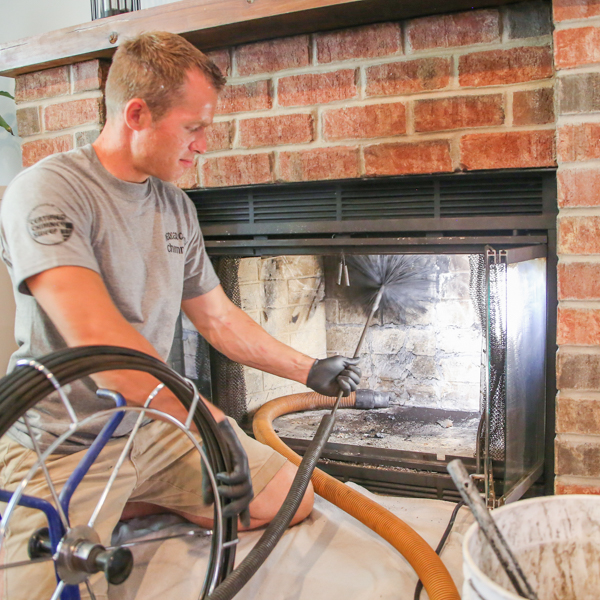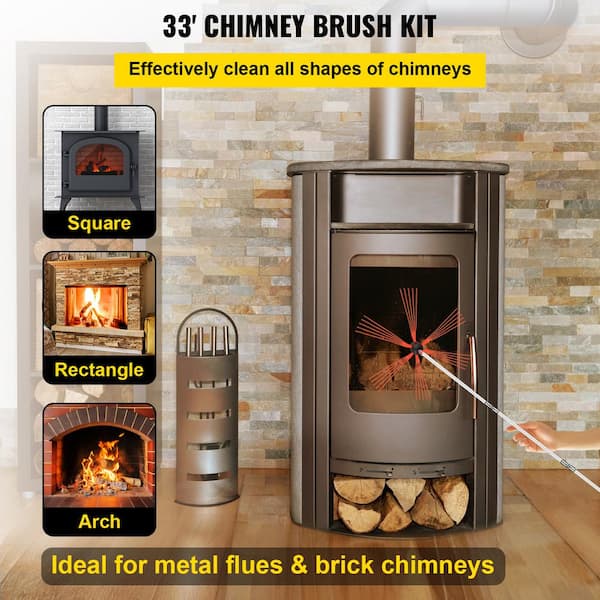Do It Yourself Chimney Maintenance San Jose: Step-by-Step Guide for Homeowners
Do It Yourself Chimney Maintenance San Jose: Step-by-Step Guide for Homeowners
Blog Article
Professional Tips for Effective Smokeshaft Upkeep You Required to Know
Chimneys serve as essential components in many homes, providing heat and convenience. From the significance of regular inspections to safe operational techniques, a detailed method to chimney maintenance is essential.
Relevance of Routine Inspections
Routine evaluations of smokeshafts are necessary for ensuring their safety and security and performance. Chimneys play a critical function in venting out dangerous gases and maintaining correct airflow in a home. Over time, creosote build-up, debris, and structural damages can happen within the chimney, posing severe risks such as chimney fires or carbon monoxide gas leaks.
Throughout a chimney examination, educated professionals analyze the problem of the smokeshaft, seeking any type of indicators of damage, obstructions, or wear and tear. They additionally check the honesty of the flue, smokeshaft liner, and chimney cap to make sure every little thing is in appropriate working order. By recognizing and addressing problems beforehand, potential risks or costly repair services can be avoided.
Routine inspections not only assist in keeping the safety of the chimney but likewise add to its overall effectiveness. A well-kept and tidy smokeshaft operates much more properly, ensuring appropriate air flow and lowering the danger of interior air contamination. Organizing yearly chimney examinations is an aggressive step that house owners can take to secure their building and liked ones.
Cleaning Methods and Frequency
Maintaining the security and performance of a chimney entails not just routine assessments yet likewise carrying out proper cleaning methods and identifying the optimal frequency for cleaning. Chimneys must be cleaned up by a professional smokeshaft move at the very least yearly, even if they are not regularly utilized. Nevertheless, if the chimney is used frequently, especially with wood-burning cooktops or fire places, it might require even more frequent cleanings to avoid the accumulation of creosote, a very combustible substance that can cause chimney fires.
Homeowners must never ever forget chimney cleansing, as it is important for keeping a functional and safe chimney system. Normal cleansings not just lower the threat of smokeshaft fires but also improve the smokeshaft's total performance and durability.
Attending To Chimney Leaks

When addressing smokeshaft leaks, detailed inspection and punctual repair services are important to stop water damages and maintain the structural honesty of the smokeshaft. Leaks in a chimney can lead to significant issues such as mold development, damage of the smokeshaft structure, and even prospective fire dangers. To properly deal with chimney leaks, beginning by examining the chimney cap, crown, flashing, and masonry for any signs of damages or wear.
Recognizing Creosote Build-Up
To understand the possible risks of creosote accumulation in smokeshafts, it is necessary to recognize its development procedure and effect on smokeshaft efficiency. Creosote is a brown or black tar-like material that collects inside chimney systems when wood or fossil fuels are melted. As smoke rises through the smokeshaft, it cools and condenses, causing the development of creosote, which sticks to the smokeshaft wall surfaces.

Regular smokeshaft inspections and cleanings by an expert smokeshaft move are crucial in preventing creosote accumulation and making sure the secure procedure of your chimney system.
Safe Procedure Practices
Carrying out proper safety methods is crucial for the protected and effective procedure of chimney systems. Always make certain that the chimney is properly evaluated and cleaned on a regular basis to remove any type of creosote accumulation, which can lead to chimney fires.
Moreover, make certain to only burn experienced timber in your fireplace, as environment-friendly or damp timber can create even more creosote and create unsafe chimney blockages. Last but not least, never leave a fire neglected and always ensure the fire is entirely snuffed out prior to going to sleep or leaving your house. By complying with these risk-free procedure methods, you can appreciate a comfortable and warm fire while making sure the security of your home and loved ones.
Final Thought
In verdict, preserving your chimney is necessary for ensuring its safety and security and effectiveness. Normal examinations, correct cleaning strategies, dealing with leakages, managing creosote accumulation, and following safe procedure techniques are crucial facets of chimney maintenance.
Over time, creosote build-up, debris, and architectural damage can occur within the chimney, posing severe risks such as chimney fires or carbon monoxide leakages.
If the smokeshaft is utilized frequently, specifically with wood-burning ranges or fire places, it may call for even more frequent cleanings to stop the build-up page of creosote, an extremely flammable substance that can lead to smokeshaft fires. (Chimney Maintenance San Jose)
To recognize the prospective hazards of creosote build-up in chimneys, it is essential to recognize its development process and effect on smokeshaft efficiency. As smoke climbs with the chimney, it cools and condenses, leading to the development of creosote, which sticks to the chimney walls.
Constantly make certain Discover More that the chimney is skillfully inspected and cleaned routinely to eliminate any type of creosote accumulation, which can lead to smokeshaft fires.
Report this page